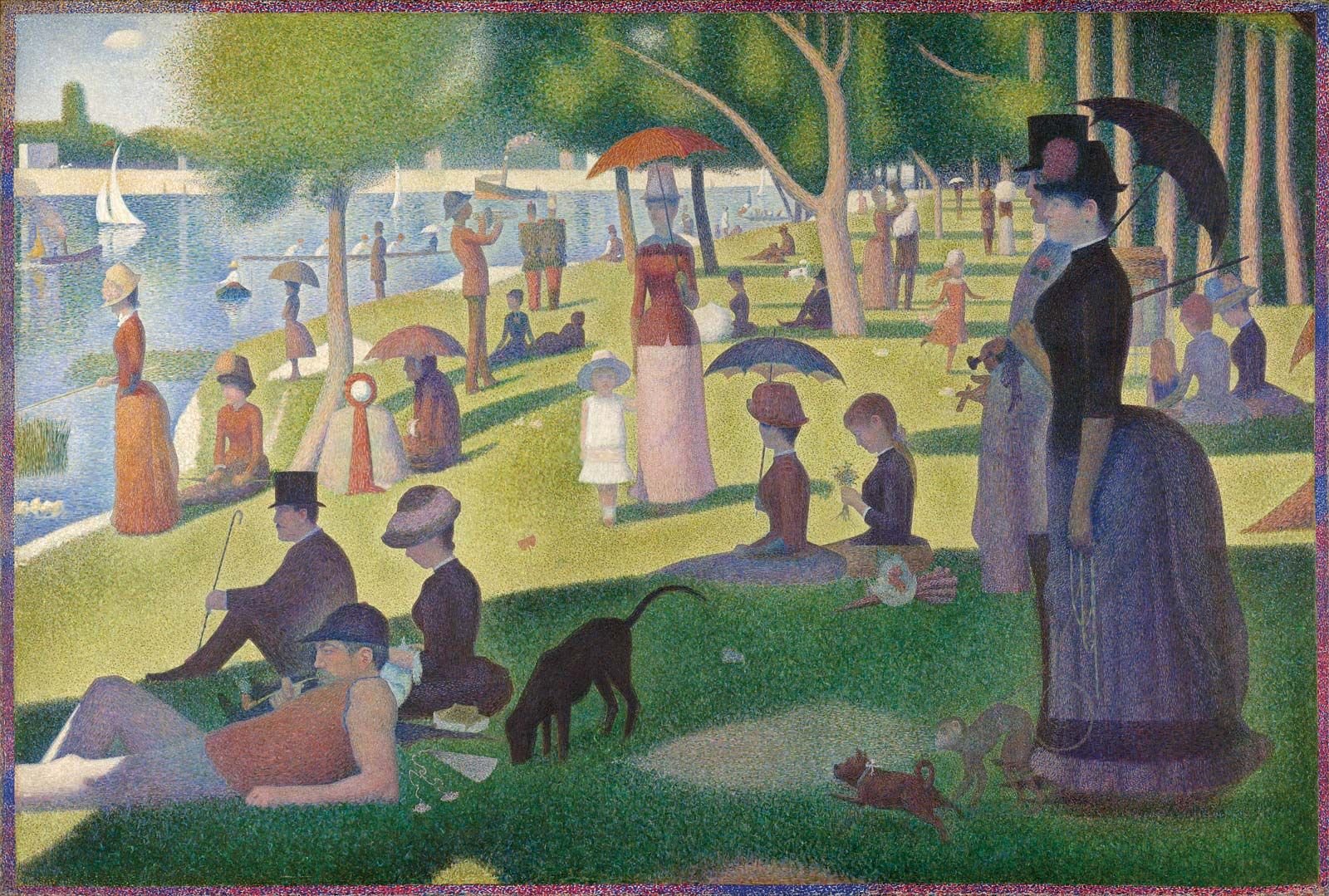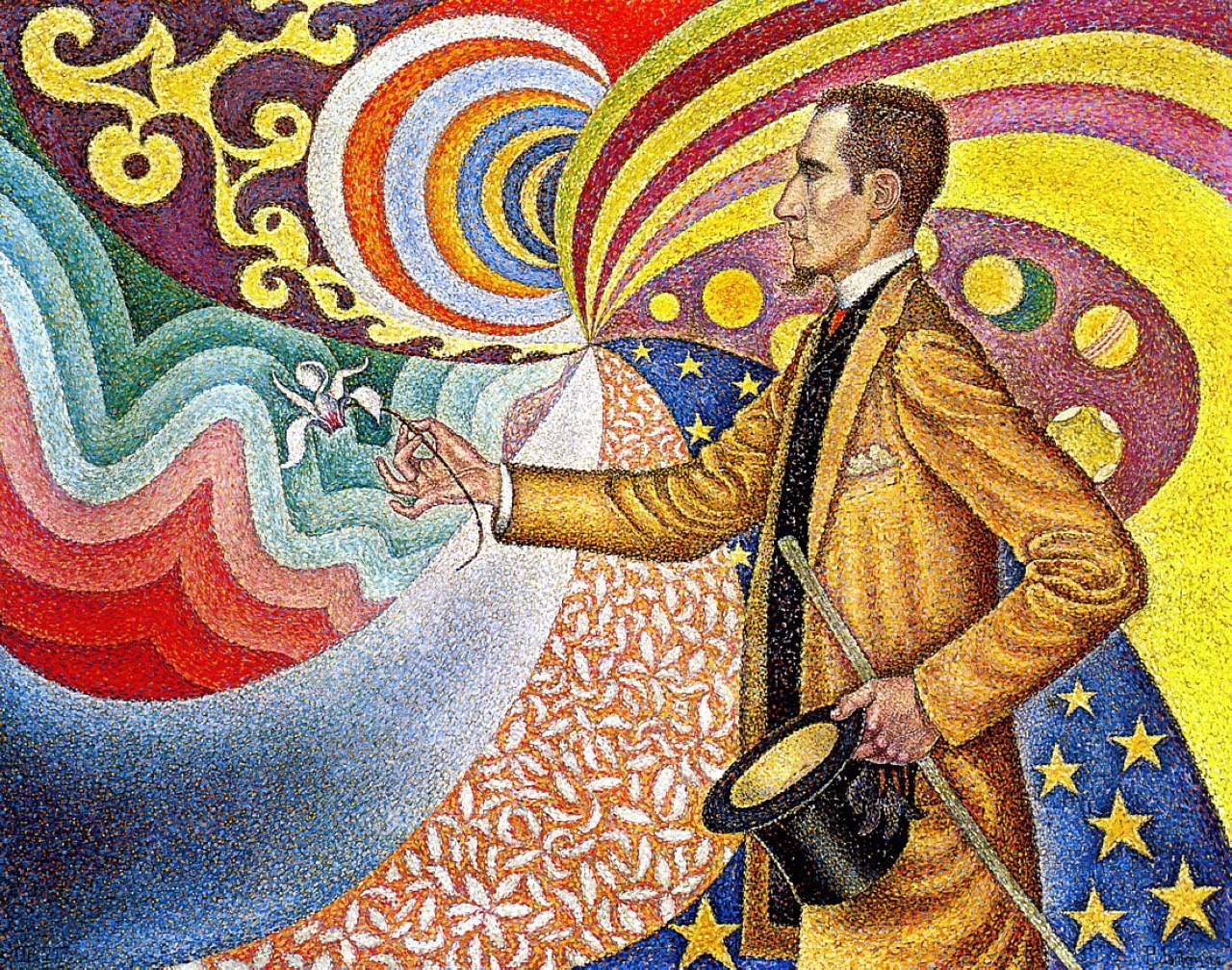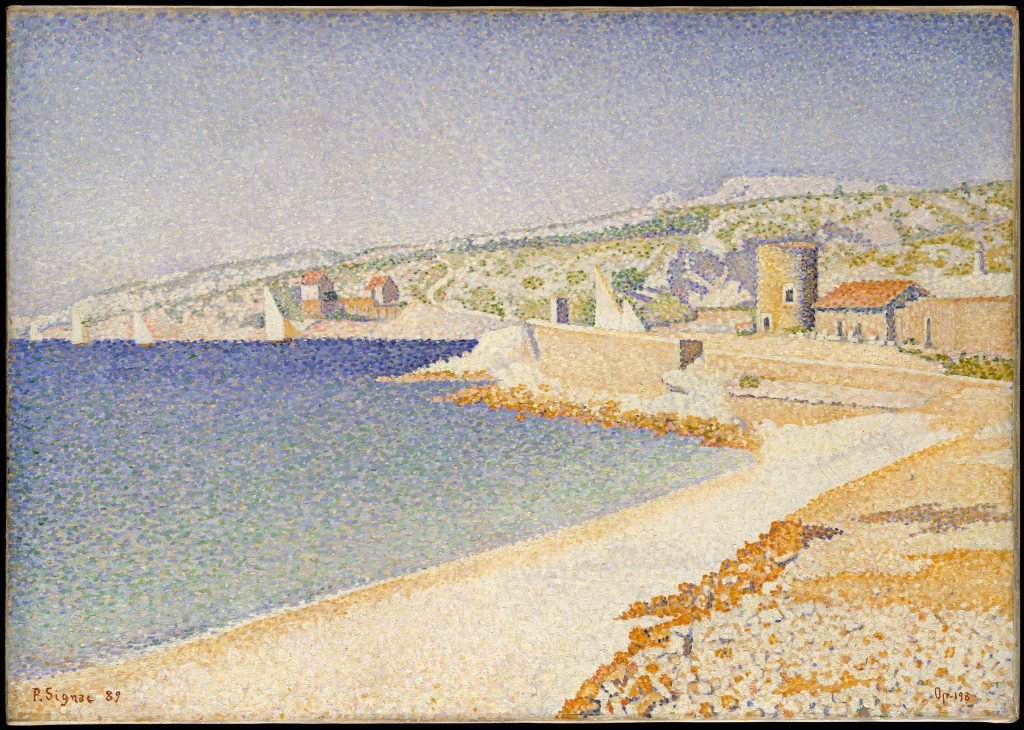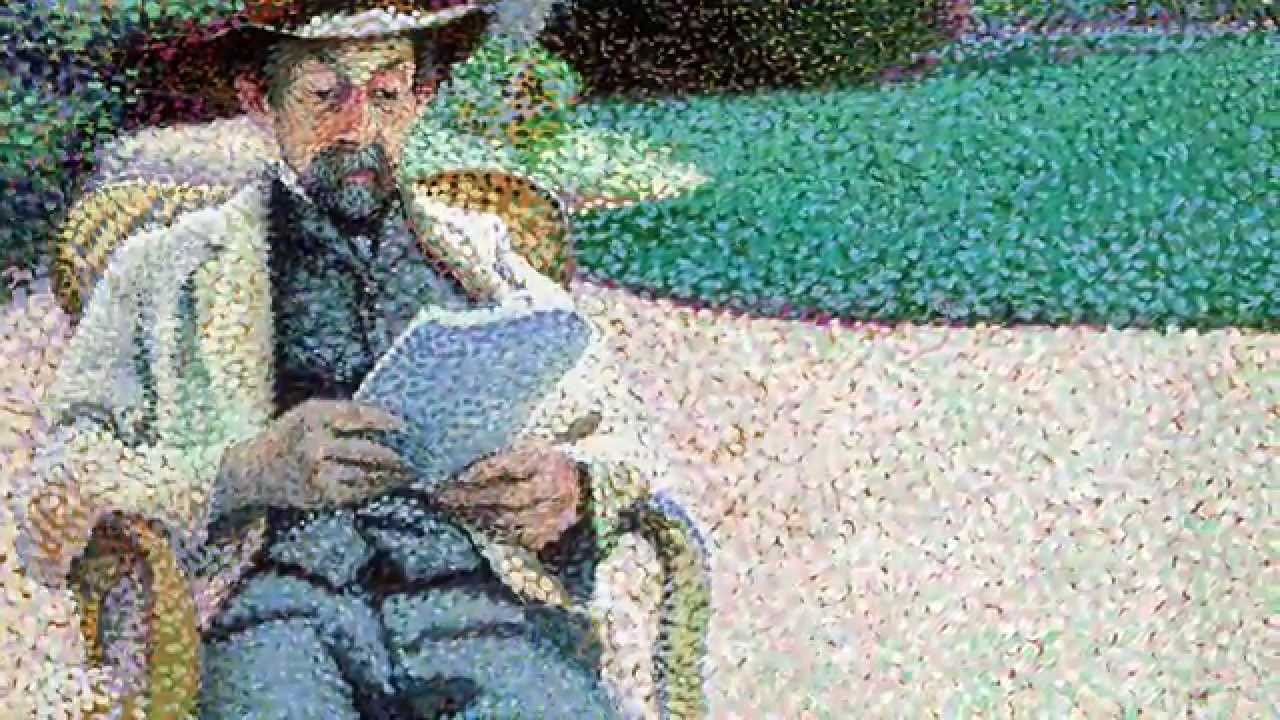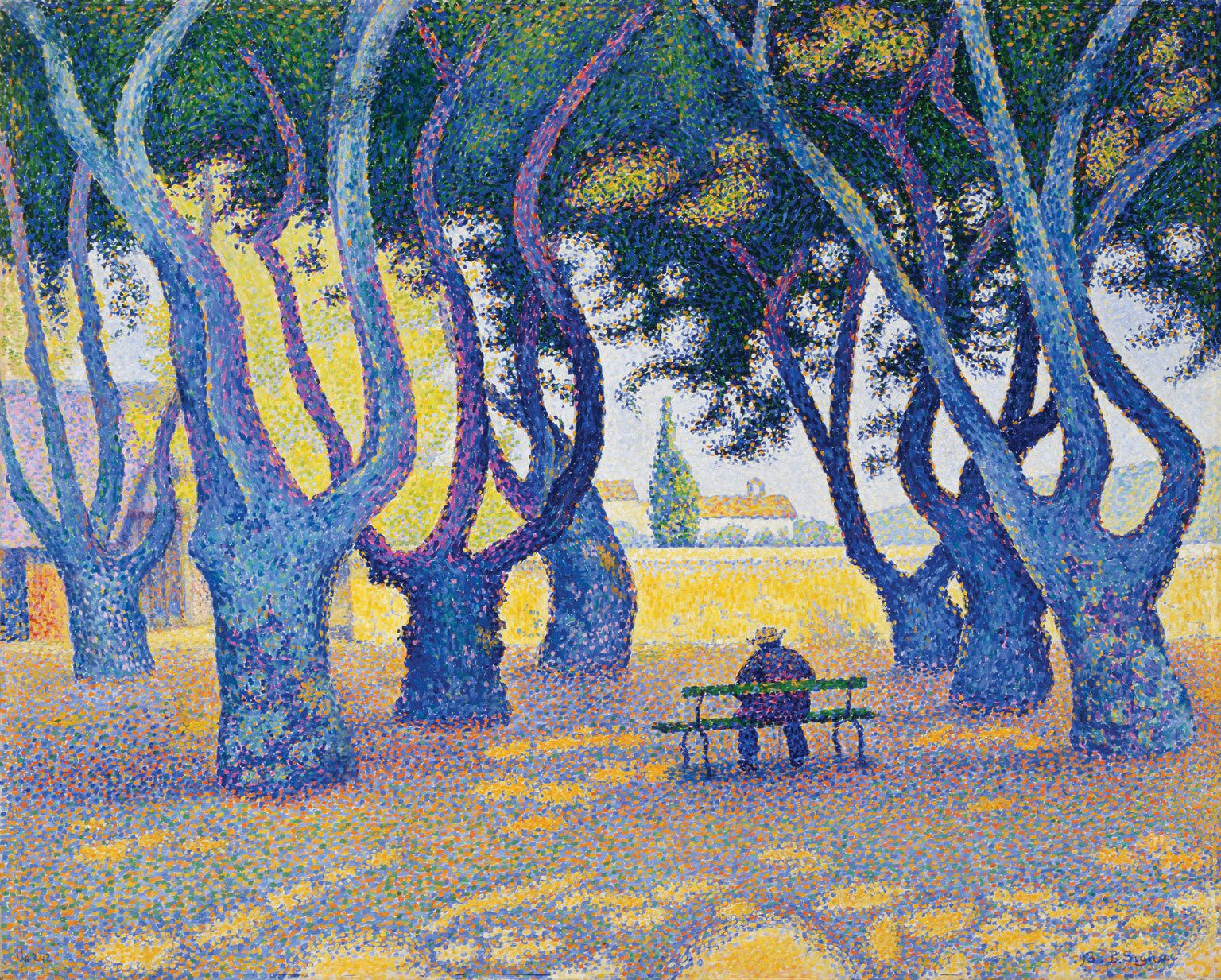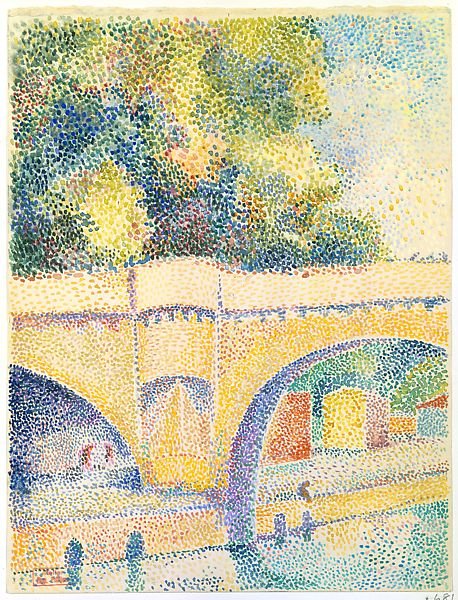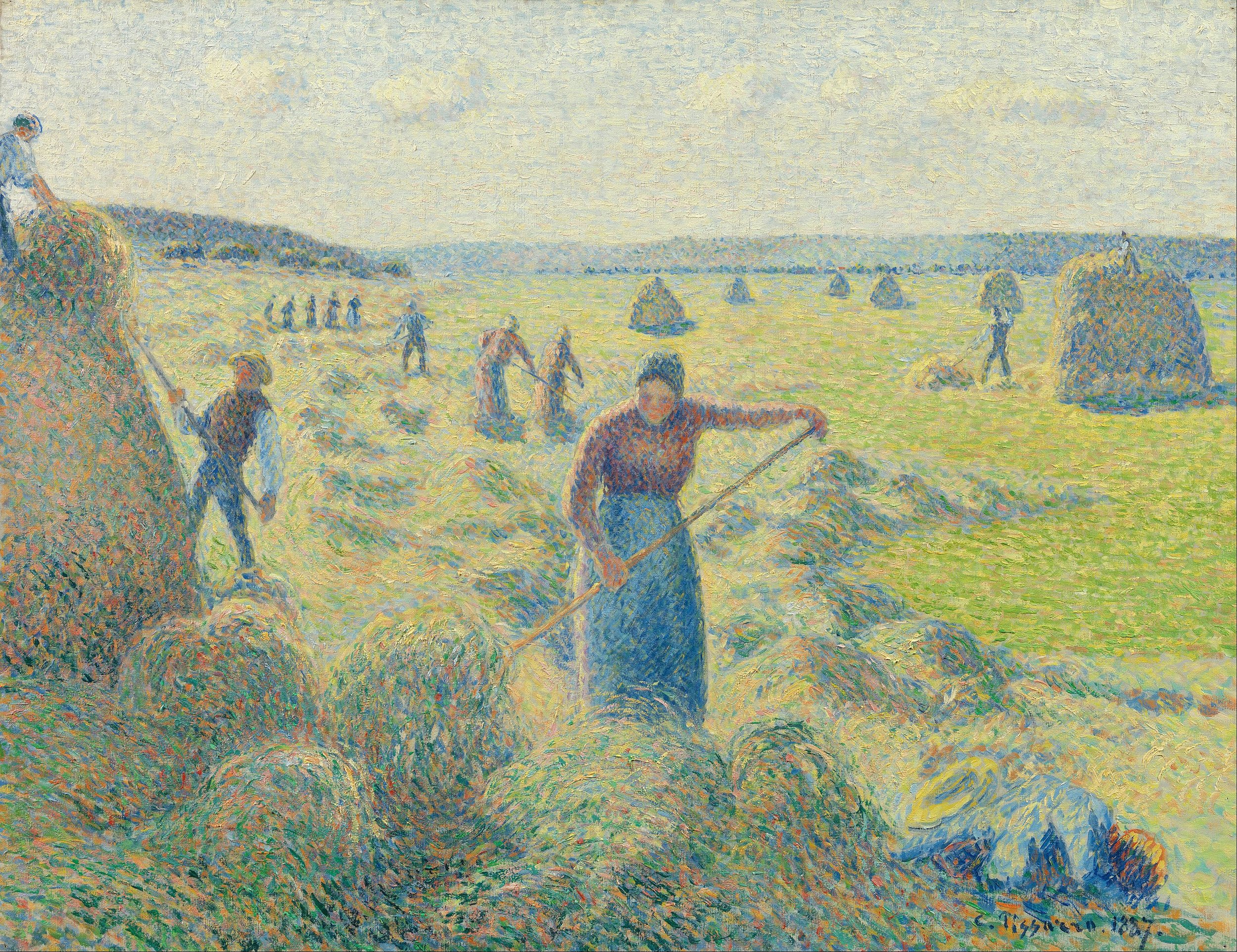nEO-IMPRESSIONISM
1884 - 1935
Then came a movement founded on scientific studies of color and its effect on viewers.
As the Impressionists became more accepted, a new group of artists began to feel their focus on the effects of light was too narrow. The sought to capture the luminosity of the world and believed that science held the key.
These artists began to study Impressionist’s use of color and brushstrokes and take different lessons. Paul Gauguin who straddled the Impressionist and Neo-Impressionist movement, had placed innovative uses of color at the center of his work. He often placed areas of contrasting or harmonizing colors next to each other to create interesting effects. Paul Seurat and his good friend, Paul Signac, shared a fascination with emerging studies of how eyes saw things. They were especially swayed by the scientific studies of Michel Eugené Chevreul and Charles Henry’s 1885 publication, “Introducing a Scientific Aesthetics” arguing for an “art based on scientific principles.”
The same year this publication appeared, Seurat began experimenting with dots of different colors placed close together in what he considered scientific experiments. He found that the eye tended to blend the different colors together creating a more luminous color. This effect seemed to better capture the atmospheric conditions he saw in nature. Seurat developed a style we now know as pointillism where entire scenes were created from tiny dots of contrasting and harmonizing colors placed close together. Van Gogh became a proponent using short brush strokes after he and Seurat spent time together in Arles, France.
These studies were embraced and furthered by other Neo-Impressionist artists, including Albert Dubois-Pillet, Camille Pissarro and Henri Edmond-Cross.
As these artists began pushing boundaries farther, much of their work began to tilt toward abstraction. At the same time, many of the Neo-Impressionists embraced anarchist political beliefs. Subjects turned to proletariat classes and away from bourgeois norms. As we look back, a strong case could be made that the Neo-Impressionists represented a crossroads in art history leading to both abstract art and the modern realists who tended to paint the isolation of modern times.
